Did you know that this state is so large, so diverse, and geographically varied that over 5,800 plant species can call California home?
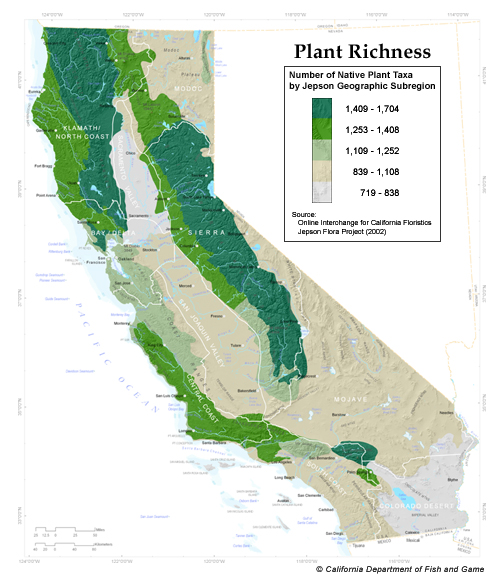
This is about the same as all other states combined! We also have over 2,100 endemic species in California, which means they cannot be found anywhere else in the world. The unique ecosystems that boast this vast amount of plant species create a one-of-a-kind state that many people come to enjoy. We are pretty lucky to live in such a cool area of the world.
Needless to say, our lives depend on plants of every species. So let’s talk about two of the biggest reason plants are so important to our survival: they give Oxgen and they take Carbon Dioxide.
Plants Produce Oxygen
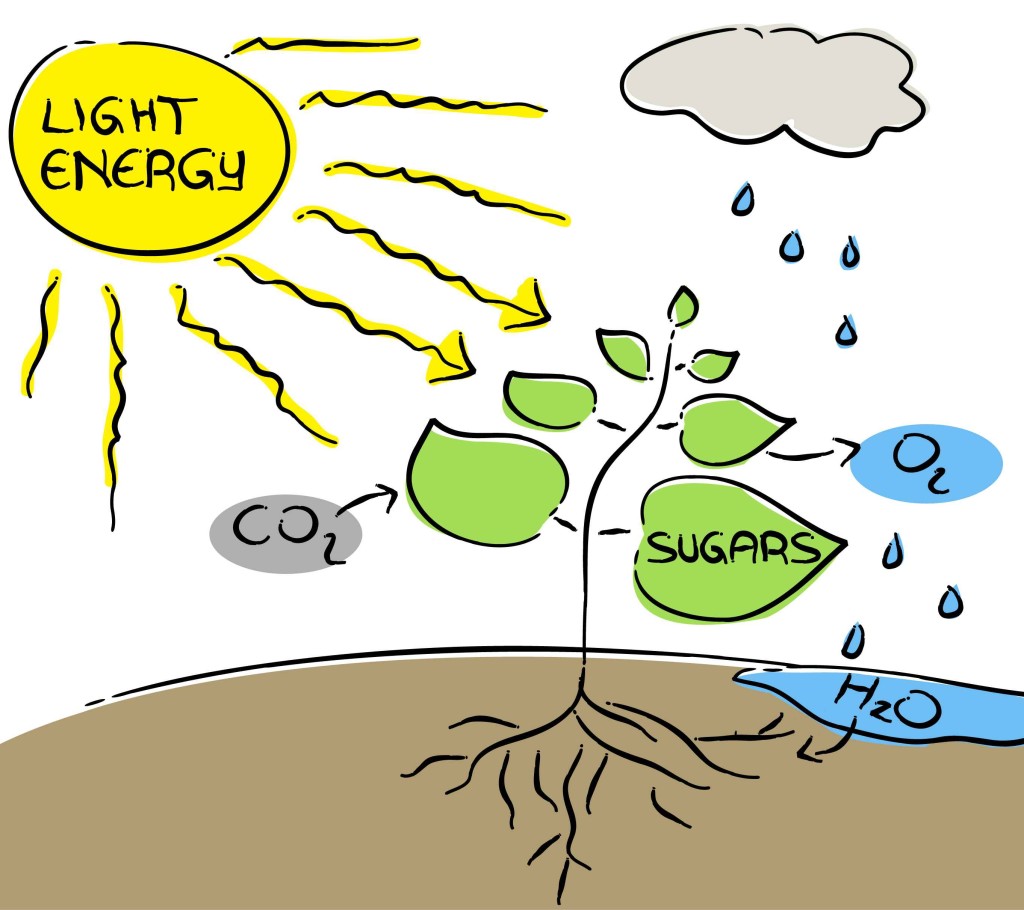 Plants are classified as producers, which means they utilize the sun’s rays to produce their own food. With the help of Carbon Dioxide and water (with additional nutrients and such), plants can make their own food, known as glucose. When they work through this chemical reaction, not only is glucose produced, but oxygen as well. Walah! Oxygen is released through their open stomatas (a small pore on the leaf membrane); we can then use that oxygen to breathe.
Plants are classified as producers, which means they utilize the sun’s rays to produce their own food. With the help of Carbon Dioxide and water (with additional nutrients and such), plants can make their own food, known as glucose. When they work through this chemical reaction, not only is glucose produced, but oxygen as well. Walah! Oxygen is released through their open stomatas (a small pore on the leaf membrane); we can then use that oxygen to breathe.
Now, we all know that we need oxygen to survive, but why?
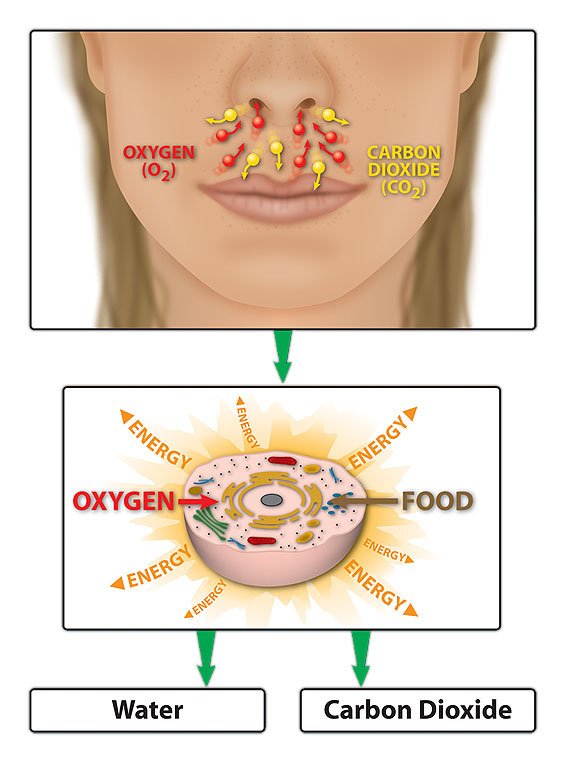 During respiration, or the act of breathing, oxygen is combined with glucose (the energy-giving and life-giving carbohydrate) to chemically release the stored energy, which keeps us alive. This is when we produce carbon dioxide, which we exhale. The carbon dioxide then enters the atmosphere, which plants can then sequester, or use, for their glucose-making process.
During respiration, or the act of breathing, oxygen is combined with glucose (the energy-giving and life-giving carbohydrate) to chemically release the stored energy, which keeps us alive. This is when we produce carbon dioxide, which we exhale. The carbon dioxide then enters the atmosphere, which plants can then sequester, or use, for their glucose-making process.
These processes of photosynthesis and respiration inherently create a feedback system in which plants can come to rely on animals, while animals definitely rely on transpiration (or release of water and oxygen into the air) to survive.
This interdependence between animals and plants contributes to the Carbon Cycle, the MOST important cycle of all cycles.
Plants Consume Carbon Dioxide

Let’s move on. The trapping of greenhouse gases within our atmosphere creates the Greenhouse Effect, which is an imaginary blanket (forgive my simplification) around the earth that provides warmth. These greenhouse gases are insanely important to our survival. Without the Greenhouse Effect, the earth’s temperature would drop about 33 degrees Celcius (91 degrees F)!!
Of these greenhouse gases, there has been an emphasis placed on the level of carbon dioxide in our atmosphere by scientists. Carbon dioxide only represents 0.036 %, while nitrogen (78.08%) and oxygen (20.95%) make up the majority of our atmospheric gases.
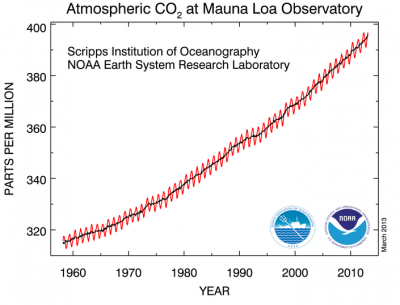
How does this relate to plants? This in-service was about plants right? Well, plants take in (or sequester) carbon dioxide during photosynthesis. Unfortunately, we produce more carbon dioxide than plants can sequester, which leads to an excess of carbon dioxide in the atmosphere.
With the rate of deforestation still high (the latest figure shows that every year, an area the size of Costa Rica is converted for other uses) there are fewer trees to sequester the increasing amount of carbon dioxide. This has led to an increase in the Greenhouse Effect.
Studies have shown that as we pump more carbon dioxide into the atmosphere, the Earth has begun to warm in areas, while the climate has begun to change in other areas of the world. In the last 300 years, the volume of carbon dioxide has increased by over 35%.
Human activities like burning fossil fuels (coal, oil, natural gas) produce an incredible amount of carbon dioxide waste that then is added to the atmosphere. This leads to a thickening in the blanket that surrounds and protects our world. Imagine yourself in a sleeping bag, pulling your head inside and zipping it up all the way. Now imagine doing this in a greenhouse. I’m sweating just from thinking about it.
And In Summary
So, to sum it up, Plants Are Important because they give us oxygen, which we need to breathe. And they take away carbon dioxide, which helps keep the greenhouse effect in check and keep us from getting too hot. While this is maybe basic information for some, it’s still a magical process and we here in California are lucky enough to have a huge amount of plants all around us helping us live comfortably every day.
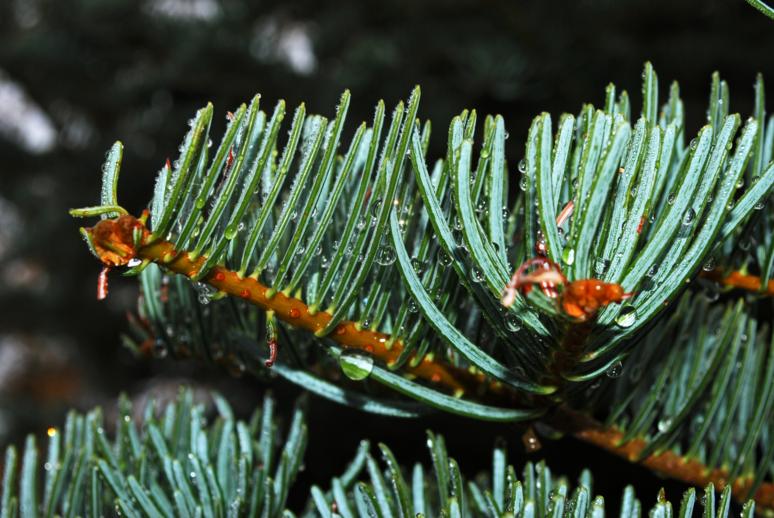
 At High Trails Outdoor Science School, we literally force our instructors to write about elementary outdoor education, teaching outside, learning outside, our dirty classroom (the forest…gosh), environmental science, outdoor science, and all other tree hugging student and kid loving things that keep us engaged, passionate, driven, loving our job, digging our life, and spreading the word to anyone whose attention we can hold for long enough to actually make it through reading this entire sentence. Whew…. www.dirtyclassroom.com
At High Trails Outdoor Science School, we literally force our instructors to write about elementary outdoor education, teaching outside, learning outside, our dirty classroom (the forest…gosh), environmental science, outdoor science, and all other tree hugging student and kid loving things that keep us engaged, passionate, driven, loving our job, digging our life, and spreading the word to anyone whose attention we can hold for long enough to actually make it through reading this entire sentence. Whew…. www.dirtyclassroom.com

Comments are closed.